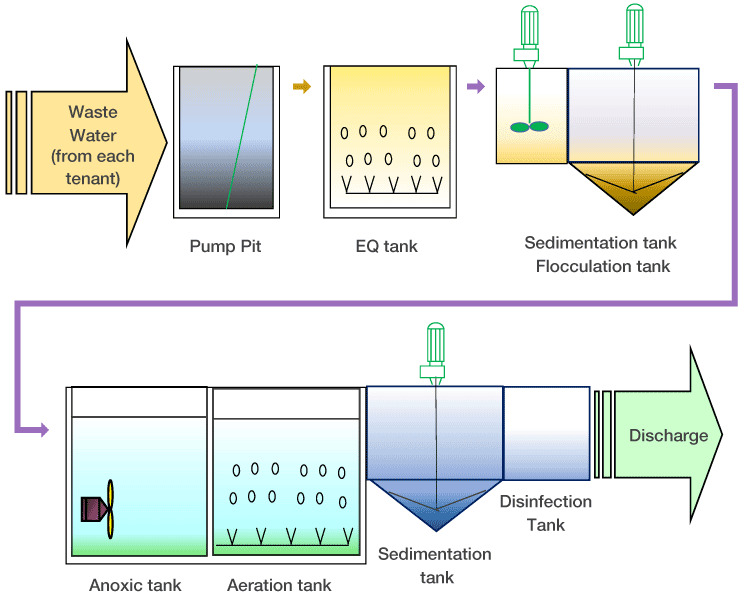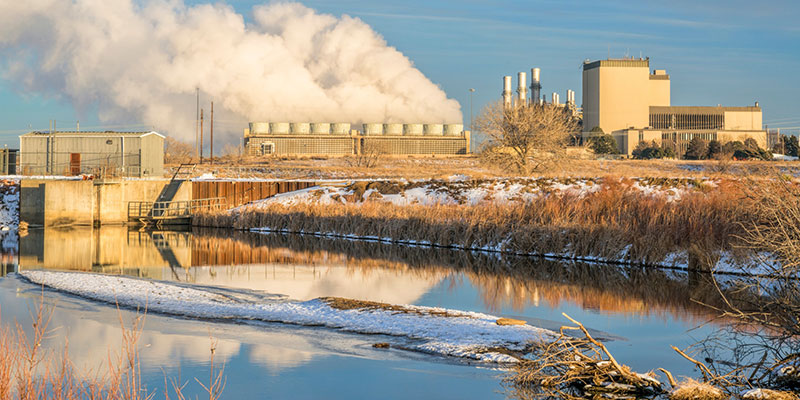Industrial Waste Water Treatment-- Boost Performance with Personalized Water Treatment Solutions
Wiki Article
Technologies and Advances in Hazardous Waste Water Therapy Technologies
The landscape of industrial wastewater therapy is undergoing a transformative shift, driven by technologies that improve both performance and sustainability. As regulatory standards progress, the integration of AI and device learning into wastewater administration systems promises to streamline procedures and make certain conformity.Introduction of Waste Water Therapy Technologies
Wastewater therapy innovations incorporate a variety of approaches made to get rid of impurities from commercial effluents before their release right into the setting. These innovations are critical for maintaining eco-friendly equilibrium and making certain compliance with ecological regulations. The main categories of wastewater therapy consist of physical, chemical, and organic methods, each offering distinctive purposes based upon the nature of the pollutants present.

Organic therapy methods utilize microbes to degrade natural issue, making them specifically effective for organic-rich effluents. Methods like triggered sludge and biofilm activators harness the all-natural degradation abilities of germs, bring about significant reductions in biochemical oxygen demand (BODY)
Advanced Purification Strategies
Advanced filtration techniques represent an important advancement in the world of commercial wastewater treatment, improving the performance of impurity elimination procedures. Industrial Waste Water Treatment. These approaches incorporate a series of technologies, consisting of microfiltration, ultrafiltration, nanofiltration, and reverse osmosis, which offer sequential barriers for various fragment dimensions and chemical frameworksMicrofiltration and ultrafiltration make use of membrane layer systems to get rid of put on hold solids, microorganisms, and bigger organic molecules, boosting the top quality of effluent previous to more therapy. Nanofiltration connects the space between ultrafiltration and reverse osmosis, effectively getting rid of divalent ions and natural compounds, thus decreasing the load on downstream procedures.
Reverse osmosis supplies the highest degree of purification by allowing just water and little particles to pass through its semi-permeable membranes, making it optimal for reclaiming premium water from industrial effluents. Current improvements in membrane technology, consisting of the advancement of more fouling-resistant and sturdy products, have dramatically enhanced operational performance and minimized costs.
Including these sophisticated filtering strategies not only boosts the overall therapy process yet likewise contributes to sustainability initiatives by enabling water reuse and source healing in industrial settings. (Industrial Waste Water Treatment)
Organic Therapy Advancements

Additionally, the development of engineered organic systems, such as membrane layer bioreactors (MBRs), combines organic therapy with advanced membrane layer filtering. This integration permits greater effluent quality and lowered footprint, making it suitable for space-constrained commercial facilities. Technologies in genetically crafted microorganisms have actually also arised, enhancing the biodegradation of i was reading this details pollutants, such as drugs and heavy steels, that are commonly challenging to get rid of.
Furthermore, the execution of bioaugmentation techniques, where advantageous germs are introduced to improve the existing biological treatment procedures, has revealed promising results in improving treatment efficiency. These developments jointly signify a pattern in the direction of more lasting and reliable organic treatment methods that can adapt to the developing intricacies of industrial wastewater streams. As sectors continue to prioritize ecological conformity, these biological advancements will certainly play a crucial role her explanation in wastewater monitoring.

Resource Recovery Approaches
In industrial settings, the assimilation of resource recuperation techniques has ended up being significantly vital for boosting sustainability and decreasing waste. These techniques concentrate on removing important products and energy from wastewater streams, therefore transforming possible contaminants right into reusable sources.One popular strategy is nutrition recuperation, where nitrogen and phosphorus, frequently present over in wastewater, are recorded and exchanged fertilizers. This not just reduces environmental influences yet likewise gives a circular economic situation service for farming applications. Additionally, innovations such as anaerobic food digestion enable the conversion of organic waste right into biogas, a renewable resource resource that can offset fossil gas usage in industrial operations.
Moreover, advanced filtration and membrane layer modern technologies facilitate the healing of commercial byproducts such as metals and salts. These recuperated materials can be rehabilitated right into production procedures, minimizing the requirement for virgin resources.
Future Trends in Drainage Monitoring
As markets progressively prioritize sustainability, the future of wastewater management is established to undertake significant changes. Technological advancements, such as fabricated knowledge and device knowing, will make it possible for extra effective tracking and monitoring of wastewater systems. These modern technologies can forecast maintenance requirements, maximize therapy procedures, and improve decision-making, inevitably lowering functional prices and ecological influence.Additionally, the assimilation of round economic situation principles will play an important function in wastewater administration. Industries are expected to shift in the direction site web of systems that not just deal with wastewater but also recoup valuable resources, such as nutrients, water, and energy. This transition will certainly lessen waste and promote the reuse of materials, straightening with international sustainability goals.
Emerging therapy strategies, such as membrane bioreactors and advanced oxidation processes, will certainly additionally improve the effectiveness of wastewater therapy, enabling higher quality effluents ideal for reuse. Furthermore, regulative structures are most likely to develop, stressing more stringent criteria for wastewater discharge and motivating markets to adopt innovative therapy options.
Conclusion
In verdict, the development of industrial wastewater therapy technologies shows a considerable change towards boosted effectiveness and sustainability. Developments in innovative filtering techniques, biological therapies, and resource recuperation techniques highlight the sector's commitment to ecological stewardship. The integration of expert system and artificial intelligence even more enhances these processes, making certain regulative conformity and advertising a circular economic situation. Continued improvements in these areas will play an essential function in forming the future of wastewater administration and protecting crucial water sources.The landscape of industrial wastewater therapy is undertaking a transformative change, driven by innovations that enhance both efficiency and sustainability.Wastewater treatment innovations encompass a variety of techniques created to get rid of impurities from commercial effluents prior to their launch right into the setting.Harnessing the power of biological procedures has actually led to substantial innovations in the therapy of commercial wastewater.In addition, the execution of bioaugmentation approaches, where beneficial microbes are presented to boost the existing organic therapy processes, has shown encouraging results in boosting therapy efficiency. These technologies jointly symbolize a pattern towards even more effective and sustainable organic therapy approaches that can adapt to the developing complexities of commercial wastewater streams.
Report this wiki page